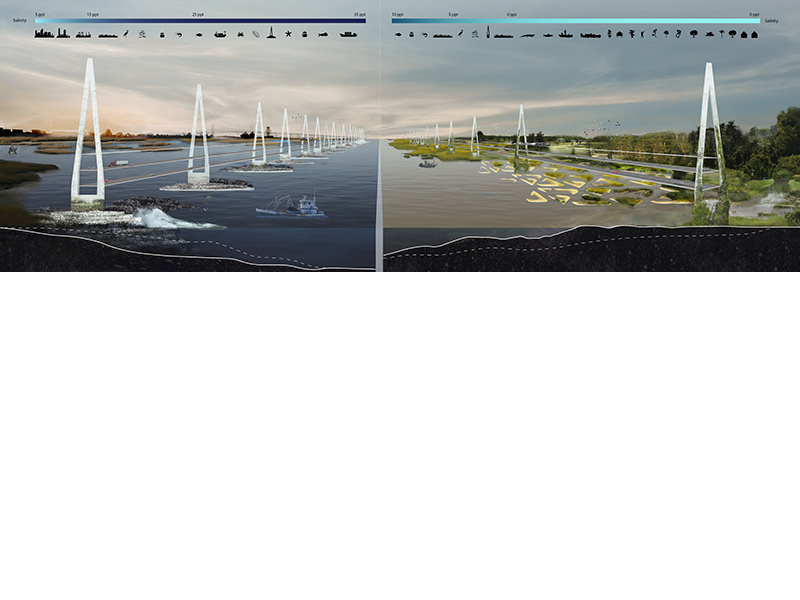Infrastructures become ecological participants through networked hydrologic basin management. Inclusive of needs
required for the productivity of adjacent social, economic, and ecological systems, Constructing Dynamism retrofits the
existing HWY 90/future I-49 corridor as a multipurpose, cross-delta artery. Optimizing the distribution of limited coastal
resources such as freshwater, sediment, and financial capital, this project assumes that basins will increasingly vary in
salinity, encompassing fresh, brackish, and saline conditions. For the purposes of potential future scenario visualization,
this project engages increasing freshwater and sediment within the Barataria Basin as well as an increasingly saline
ecology throughout Terrebonne Basin. Producing a more flexible, diverse, and adaptive coastal region, basin industry,
economy, and ecology are then adapted to accommodate these varying conditions. Within these transforming
environments, design interventions are required to become participatory actuators within these hydrological conditions.
Currently spanning much of the hydrologic system and a part of the Southeast Louisiana infrastructural network, HWY 90
is retrofitted and redesigned in order to act as a transportation connector between basins, as well as a facilitator of
economic and ecological vitality. As the land mass of Louisiana continues to transform, the infrastructure itself participates
with the interface between the built and natural environment. Within a condition of increasing salinity, the foundation of the
structure engages with increased tidal flux and rising sea levels. In the adjacent and increasingly freshwater environ, the
structural intervals facilitate flows and eddies in order to encourage sediment deposition. Multipurpose above ground and
water planes, the rail and road connectors transport commuter populations to industry and settlement nodes while
facilitating the transfer of resources above vulnerable territories. Specifically engaged relative to a transforming salinity
gradient, the design interventions contribute at multiple scales and are enabled by planning and operation strategies that
incorporate watershed resources and distribution.
PROJECT COMPLETED WITH THE GENEROUS SUPPORT OF THE LSU COASTAL SUSTAINABILITY STUDIO




